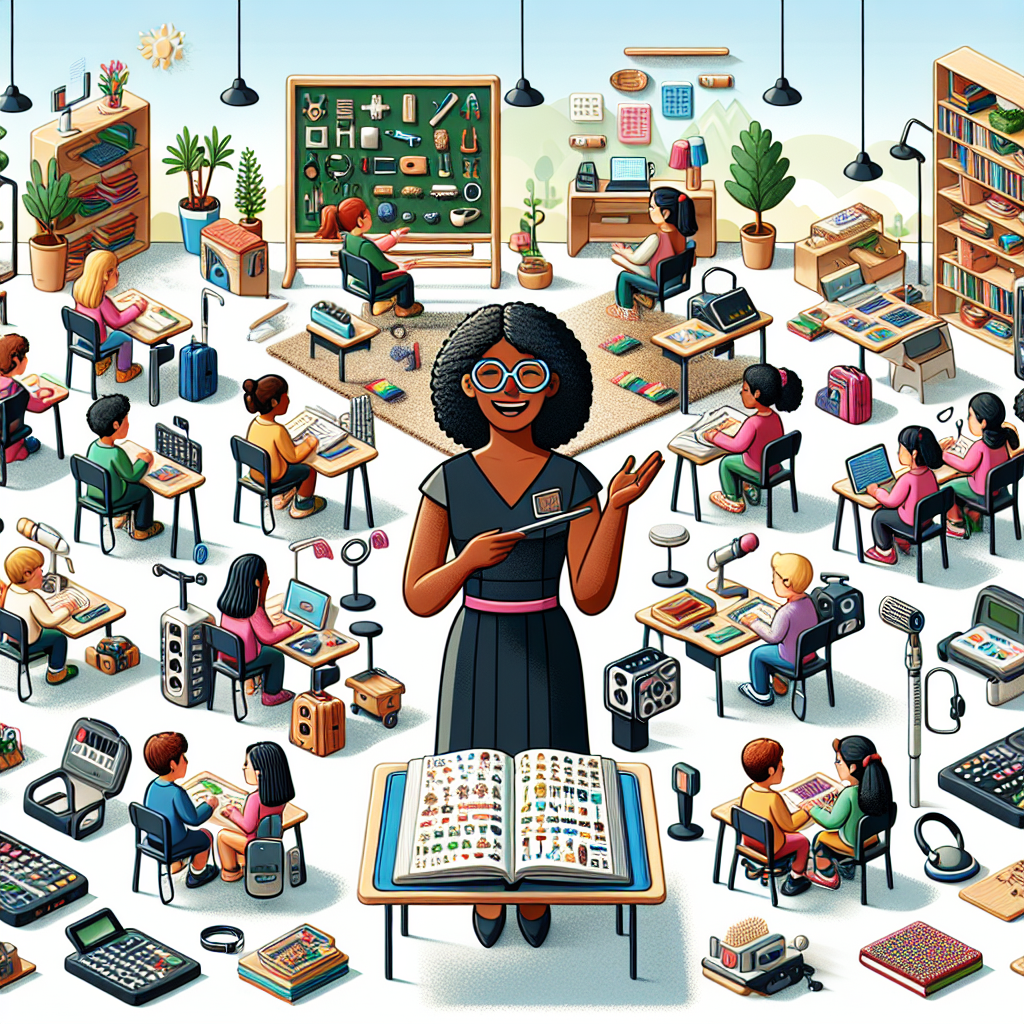
Teaching Tools for Success: Essential Strategies and Resources for Learning-Disabled Students
Introduction
In an increasingly diverse classroom, the need for effective teaching strategies and tools is paramount, especially when addressing the unique needs of learning-disabled students. With approximately 1 in 5 children diagnosed with a learning disability, educators are challenged to create inclusive environments where every student has the opportunity to succeed. This article delves into "Teaching Tools for Success: Strategies and Resources for Learning-Disabled Students," providing essential insights, practical tools, and proven strategies that promote effective learning for all.
Understanding Learning Disabilities
Defining Learning Disabilities
Learning disabilities encompass a range of disorders that affect how individuals process information, which can significantly hinder their academic performance. Common types include dyslexia (reading difficulties), dyscalculia (difficulty with math), dysgraphia (issues with writing), and ADHD (Attention-Deficit/Hyperactivity Disorder). Understanding these disabilities is the first step in creating effective teaching tools for success.
Statistics and Facts
| Statistic | Value |
|---|---|
| Prevalence of Learning Disabilities | 1 in 5 children |
| Percentage of Students in Special Education | Approximately 13% |
| Likelihood of Kids with Learning Disabilities | They are at greater risk for dropping out |
These statistics underscore the importance of tailored educational resources and strategies.
Proven Teaching Tools for Success
1. Multi-Sensory Learning Approaches
Multi-sensory learning combines visual, auditory, and kinesthetic elements to engage various senses, making learning more accessible. Programs like Orton-Gillingham and the Wilson Reading System exemplify effective multi-sensory techniques.
Case Study: The Orton-Gillingham Approach
In a school in California, teachers implemented the Orton-Gillingham method with a focus on phonemic awareness. After only six months, students diagnosed with dyslexia saw a 40% improvement in their reading levels compared to their peers. The hands-on strategies helped them retain critical skills, exemplifying the efficacy of multi-sensory education.
2. Technology Integration
Educational technology offers numerous resources tailored to learning-disabled students. Apps and software like Read&Write, Mod Math, and Bookshare are designed to provide customized learning solutions.
Case Study: Implementing Read&Write
A New York school introduced Read&Write to students with dyslexia and ADHD. The results were encouraging; 70% of students reported increased confidence in their reading abilities. Furthermore, teachers noted improved writing quality as a direct result of utilizing speech-to-text features.
3. Individualized Education Plans (IEPs)
Creating well-structured IEPs is essential for meeting the specific needs of learning-disabled students. IEPs outline personalized goals, resources, and methods of assessment, providing a roadmap for students’ education.
Case Study: IEP Success in Texas
One Texas school showcased how responsive IEP implementation can lead to success. Students engaged in tailored interventions demonstrated a 60% improvement in standardized testing scores over two years, validating the necessity of individualized approaches in education.
Effective Classroom Strategies
1. Structured Environment
A structured classroom can significantly enhance learning for those with disabilities. Establishing predictable routines helps students feel secure, enabling them to focus on learning.
2. Collaborative Learning
Group activities can bolster social skills while promoting understanding among peers. This not only helps learning-disabled students feel included but often spurs academic success.
Case Study: Peer Learning in Action
In a Chicago classroom, collaborative group projects have allowed learning-disabled students to share skills and insights. Feedback from group members enhanced overall performance, illustrating the social benefits of collaboration.
3. Differentiated Instruction
Tailoring instruction to meet different learning styles ensures that every student can thrive. Utilizing diverse teaching strategies allows educators to reach each student according to their unique needs.
Resources and Support Networks
1. Professional Development for Educators
Continuous training ensures educators remain informed about best practices and innovative strategies for teaching learning-disabled students. Resources like the Council for Exceptional Children (CEC) provide webinars, workshops, and literature focused on current educational needs.
2. Parent and Community Involvement
Engaging parents and the community creates a support network that extends beyond the classroom. Programs offering resources and information empower families to advocate for their children.
Case Study: Parent Workshops in Florida
In Florida, a school district launched workshops for parents of learning-disabled students. After one year, parent engagement increased by 50%, leading to higher student academic performance and improved communication between home and school.
Conclusion
Understanding and applying effective "Teaching Tools for Success: Strategies and Resources for Learning-Disabled Students" is crucial for creating an inclusive educational environment. By embracing multi-sensory approaches, integrating technology, and fostering a collaborative, structured classroom, educators can profoundly impact their students’ lives.
The journey to support learning-disabled students is ongoing, and it requires unwavering commitment and creativity. As educators and stakeholders, we must advocate for nuanced approaches to learning, ensuring that every child, regardless of their challenges, has the tools they need to succeed and thrive.
FAQs
1. What are some common learning disabilities?
The most common learning disabilities include dyslexia, dyscalculia, dysgraphia, and ADHD.
2. How can I identify if my child has a learning disability?
Look for persistent difficulties in reading, writing, math, or focusing compared to peers. Consulting a specialist for proper evaluation is essential.
3. Are there specific teaching tools for ADHD?
Yes, tools like timers, fidget devices, and interactive learning apps can help students with ADHD remain engaged and focused.
4. How often should I update my child’s IEP?
Review and update the IEP annually, or more frequently if your child’s needs change significantly.
5. What role do parents play in supporting learning-disabled students?
Parents can advocate for their children, communicate with educators, and provide additional support at home to reinforce learning.
6. Are there online resources for finding educational technology?
Yes, several resources such as EdSurge and Common Sense Education provide reviews and recommendations for educational technology tailored to learning-disabled students.
By utilizing these strategies and tools, we can create an inclusive educational experience that celebrates each student’s unique abilities. The road may be challenging, but the rewards are immeasurable when every student has the opportunity to succeed.






